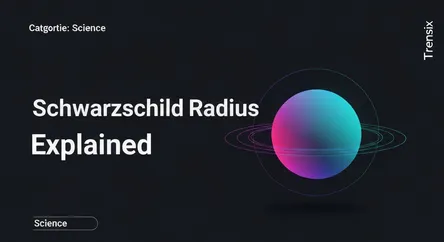Science
Schwarzschild Radius Explained

Discover the Schwarzschild radius, the critical boundary around a black hole from which nothing, not even light, can escape. The point of no return.
What is it?
The Schwarzschild radius is the critical radius at which an object's mass becomes so compressed that its own gravitational pull is inescapable, forming a black hole. Named after physicist Karl Schwarzschild, who derived it from Einstein's theory of general relativity, this radius defines the boundary known as the event horizon. Anything that crosses this point of no return, including light, cannot escape the black hole's gravitational grasp. For any given mass, there is a corresponding Schwarzschild radius; if that mass is squeezed into a sphere of that radius or smaller, it will inevitably collapse into a singularity.
Why is it trending?
Interest in the Schwarzschild radius has surged thanks to groundbreaking astronomical observations. The Event Horizon Telescope (EHT) project, which has successfully captured the first-ever images of black holes like Sagittarius A* and M87*, has brought this once-theoretical concept into sharp focus. These incredible images provide direct visual evidence of the event horizon, making abstract physics tangible for the public. Furthermore, ongoing discoveries in gravitational wave astronomy from colliding black holes continue to test and confirm the predictions of general relativity, keeping concepts like the Schwarzschild radius in the scientific spotlight.
How does it affect people?
Directly, the Schwarzschild radius has no impact on daily life. However, it is fundamental to our modern understanding of the universe. It helps scientists explain the final stages of massive stars, the dynamics of galaxies (most of which have a supermassive black hole at their center), and the extreme limits of physics. Studying concepts like the event horizon pushes the boundaries of our knowledge, driving technological innovation in telescopes and computational power. It fuels our curiosity about the cosmos and our place within it, representing a key piece in the puzzle of how spacetime and gravity work.